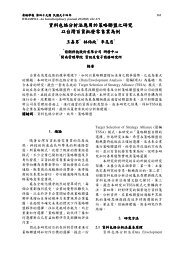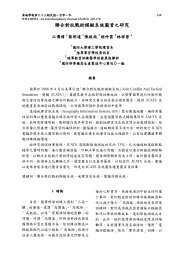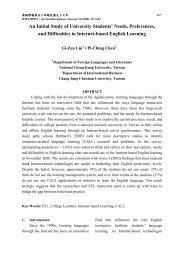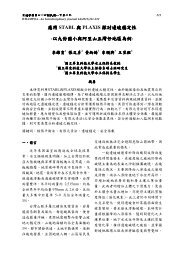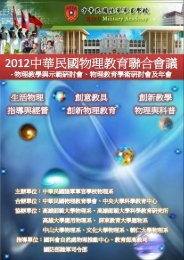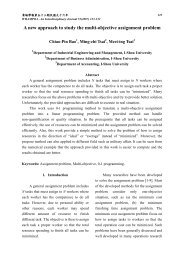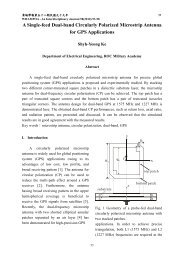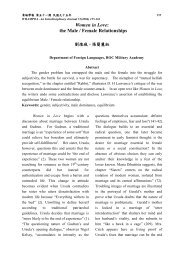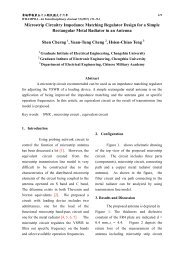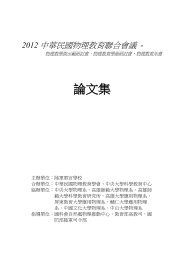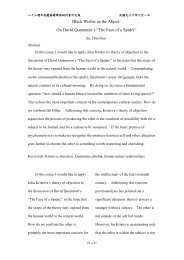The Effect of English Popular Songs on Learning Motivation and ...
The Effect of English Popular Songs on Learning Motivation and ...
The Effect of English Popular Songs on Learning Motivation and ...
Create successful ePaper yourself
Turn your PDF publications into a flip-book with our unique Google optimized e-Paper software.
<str<strong>on</strong>g>The</str<strong>on</strong>g> <str<strong>on</strong>g>Effect</str<strong>on</strong>g> <str<strong>on</strong>g>of</str<strong>on</strong>g> <str<strong>on</strong>g>English</str<strong>on</strong>g> <str<strong>on</strong>g>Popular</str<strong>on</strong>g> <str<strong>on</strong>g>S<strong>on</strong>gs</str<strong>on</strong>g> <strong>on</strong> <strong>Learning</strong> 19Motivati<strong>on</strong> <strong>and</strong> <strong>Learning</strong> Performancedeveloped by Educati<strong>on</strong>al Bureau <str<strong>on</strong>g>of</str<strong>on</strong>g> TainanCity, there was a secti<strong>on</strong> in each less<strong>on</strong> thatrequired students to read <strong>and</strong> spell certaintarget words. Since that most <str<strong>on</strong>g>of</str<strong>on</strong>g> the targetwords were from Dolch Basic Sight WordsList, students have learned the list from theirfifth grade. <str<strong>on</strong>g>The</str<strong>on</strong>g>refore, it was assumed thatstudents could recognize most <str<strong>on</strong>g>of</str<strong>on</strong>g> the wordsin the lyrics.3.3 InstrumentTo underst<strong>and</strong> the improvement <str<strong>on</strong>g>of</str<strong>on</strong>g>students’ abilities through <str<strong>on</strong>g>English</str<strong>on</strong>g> s<strong>on</strong>glearning, a questi<strong>on</strong>naire was designed bythe researcher herself for a further study.Besides the main survey items, there weretwo items about students’ backgroundinformati<strong>on</strong> <strong>and</strong> an invitati<strong>on</strong> letter to fill inthe questi<strong>on</strong>naire. A total <str<strong>on</strong>g>of</str<strong>on</strong>g> 17 survey itemswere designed to investigate whetherstudents were motivated to learn <str<strong>on</strong>g>English</str<strong>on</strong>g>through the teaching <str<strong>on</strong>g>of</str<strong>on</strong>g> <str<strong>on</strong>g>English</str<strong>on</strong>g> populars<strong>on</strong>gs. Moreover, this study also examinedhow young learners felt after learning<str<strong>on</strong>g>English</str<strong>on</strong>g> through popular s<strong>on</strong>g singing. Allitems <str<strong>on</strong>g>of</str<strong>on</strong>g> the survey questi<strong>on</strong>naire weresubdivided into two categories. One wasrelated to the variable <str<strong>on</strong>g>of</str<strong>on</strong>g> “learningmotivati<strong>on</strong>”, <strong>and</strong> the other was “learningperformance”. In additi<strong>on</strong> to the 16 items,the final item (Item 17) was an open-endedquesti<strong>on</strong> designed for the students to expresstheir opini<strong>on</strong>s about which s<strong>on</strong>g theyenjoyed most <strong>and</strong> why they liked thespecific s<strong>on</strong>g.Except Item 15, all the other surveyitems were designed in positive statements.Participants indicated the extent to whichthey felt each item was true for them <strong>on</strong> a4-point scale. <str<strong>on</strong>g>The</str<strong>on</strong>g> scoring system was“str<strong>on</strong>gly agree (SA)” to be scored 4 points,“agree (A)” 3 points, “disagree (DA)” 2points, <strong>and</strong> “str<strong>on</strong>gly disagree (SD)” 1 point.Furthermore, for collecting the qualitativedata for references, <strong>on</strong>e open-ended questi<strong>on</strong>(Item17) designed to provide students with achance to state or express their percepti<strong>on</strong>sor opini<strong>on</strong>s about the use <str<strong>on</strong>g>of</str<strong>on</strong>g> popular s<strong>on</strong>gs inthe class, was not scored by numbers.3.4 Descripti<strong>on</strong> <str<strong>on</strong>g>of</str<strong>on</strong>g> the Treatment<str<strong>on</strong>g>The</str<strong>on</strong>g> durati<strong>on</strong> <str<strong>on</strong>g>of</str<strong>on</strong>g> the present study lastedfor <strong>on</strong>e semester. Since the four <str<strong>on</strong>g>English</str<strong>on</strong>g>popular s<strong>on</strong>gs were used as the supplementalmaterials to their <str<strong>on</strong>g>English</str<strong>on</strong>g> textbook, theinstructi<strong>on</strong>al time was intermittent. That is,each s<strong>on</strong>g was introduced after the end <str<strong>on</strong>g>of</str<strong>on</strong>g><strong>on</strong>e less<strong>on</strong>. On average, 15 minutes perperiod were reserved for the appreciati<strong>on</strong> <str<strong>on</strong>g>of</str<strong>on</strong>g><strong>on</strong>e <str<strong>on</strong>g>English</str<strong>on</strong>g> popular s<strong>on</strong>g <strong>and</strong> the studentshad two class periods per week. <str<strong>on</strong>g>The</str<strong>on</strong>g> studentswere exposed to the s<strong>on</strong>g 30 minutes a weekfor three c<strong>on</strong>tinuous weeks. To sum up, therewas a total <str<strong>on</strong>g>of</str<strong>on</strong>g> six-hour instructi<strong>on</strong>al timewithin 12 weeks..Results <strong>and</strong> Discussi<strong>on</strong><str<strong>on</strong>g>The</str<strong>on</strong>g> collected data was analyzedthrough SPSS 10.0. In order to check if thestudents were attentive when completing thequesti<strong>on</strong>naire, Item 15 was designed as theopposite statement <str<strong>on</strong>g>of</str<strong>on</strong>g> Item 14. That is, Item15 describing about the difficulty <str<strong>on</strong>g>of</str<strong>on</strong>g> theteaching materials was separately counted<strong>and</strong> discussed. This meant there were 14survey items (Items 1-13 <strong>and</strong> 16) in the19




